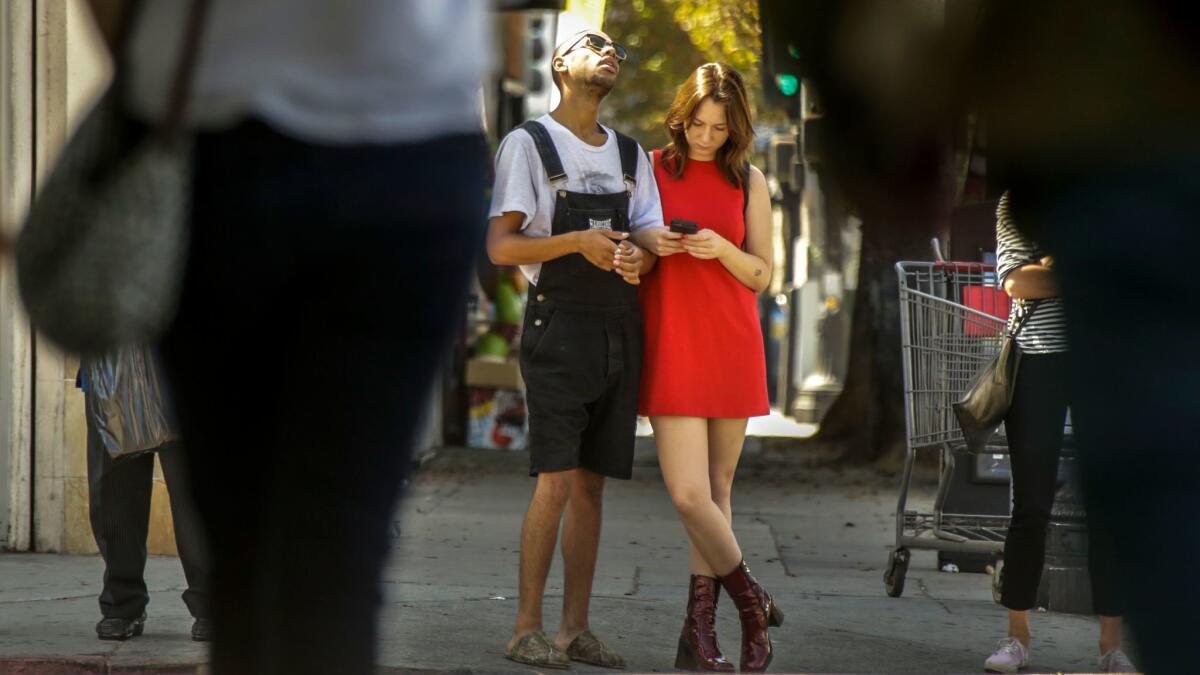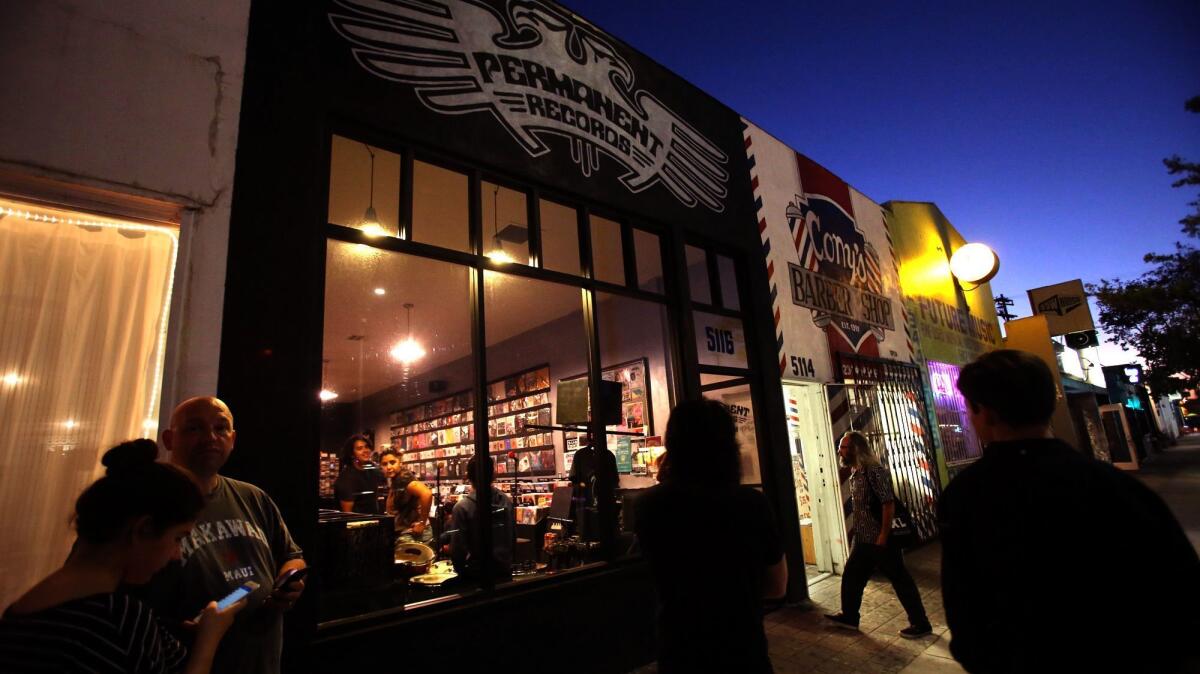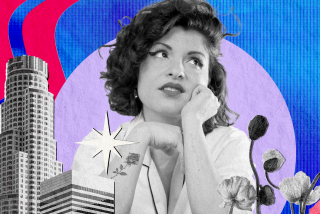Neighborhood Spotlight: Highland Park, enjoying boom times again, wears its past on its sleeve

The steep, hilly countryside along the Arroyo Seco canyon was once as wild and untamed as the body of water that forms its spine.
When swollen by winter rains, the creek — typically an inconstant trickle — rages uncontrollably, sweeping all before it down to the Los Angeles River and out into the ocean.
That tempestuous seasonal waterway kept the arroyo settlements of the 19th century relatively disconnected from the city downstream, and the rugged terrain mostly unconquered.
In the 1880s, however, Highland Park and its neighbor Garvanza took advantage of the scenic isolation in different ways: Garvanza by developing as a resort town complete with a grand hotel and a train station on the famed Santa Fe Railroad, and Highland Park by becoming a destination for Angelenos traveling far away from the prying eyes of city authorities to partake in the wide variety of illicit activities on offer in the old Sycamore Grove.
Both burgs were independent, but by the late 1800s the city of Los Angeles, in a precursor of waves of annexation to come, was wooing them with the same irresistible offer of plentiful water and municipal services that it was pitching to communities up and down the arroyo.

With annexation to the city came an end of Sycamore Grove as a den of iniquity following its transformation into one of the first municipal parks in Los Angeles, and the slow absorption of Garvanza into greater Highland Park.
With trolleys coursing up and down Pasadena Avenue (now Figueroa Street) and the eventual taming of the Arroyo Seco via channelization, Highland Park began a period of rapid development as a streetcar suburb.
On the eastern edge of the neighborhood, in Garvanza, an important center of the Arts and Crafts movement flourished, beginning with the relocation of the Judson Studios from downtown to its current location on Avenue 66, just south of York Boulevard.
The neighborhood thrived throughout the prewar period, when many of the landmarks that now define Highland Park — including the Highland Theater and the Highland Park Masonic Temple — were built. In the 1950s, the rise of the suburbs saw the beginning a period of transition for the neighborhood, with Highland Park becoming an important center of Latino life in Los Angeles.
Now, as the neighborhood’s Craftsman homes and walkable mix of commercial and residential projects have enjoyed renewed popularity, it is experiencing an economic boom. With a resurgent downtown just a few minutes away via the Metro Gold Line, Highland Park’s 20th century streetcar suburb beginnings are reasserting themselves more than 100 years later.
Neighborhood highlights
Walkable history: A modern Angeleno taking a stroll down Figueroa Street today can take in some of the same urban vistas that their predecessors saw a century ago.
Eat, drink and be bowling: With plenty of bars, restaurants, and a newly renovated bowling alley (RIP, Mr. T’s Bowl) HLP has some of the best nightlife in Northeast L.A.
Arts and crafts: Galleries, the Lummis House, the Judson Studios and more make Highland Park a draw for art lovers.
Neighborhood challenges
A painful transition: Like other fast-changing neighborhoods, Highland Park has not always been able to accommodate the new without displacing the established.
Expert insight
Typically, a new listing that has been renovated well will last about a week on the market, said Brendan Curran, a Northeast L.A. resident and agent with Keller Williams Realty. But not everything is a quick sell.
“A cheap flip doesn’t work in this area,” said Curran, who currently holds the listing for an updated Spanish-style home in neighborhood. “Most buyers in this area are smart — they can sniff out a cheap flip.”
Given the dearth of inventory in Highland Park, most properties will receive multiple offers if priced reasonably, he said, which can present challenges for potential home buyers.
“It’s really important in this area to have a local agent,” Curran said. “The agent really needs to guide the buyer into the right price point, because most listings are going to have multiple bids and sell for over the asking price.”
Market snapshot
In the 90042 ZIP Code, based on 29 sales, the median sales price for single-family homes in December was $670,000, according to CoreLogic. That was a 6.3% increase in median price year over year.
Report card
There are more than a dozen public, private and charter schools within the boundaries of Highland Park. Among them is Garvanza Elementary, which scored 802 out of 1,000 in the 2013 Academic Performance Index.
Buchanan Street Elementary had a score of 757, San Pascual Avenue Elementary scored 750 and Monte Vista Street Elementary scored 748. Luther Burbank Middle scored 786, and Benjamin Franklin Senior High had a score of 713.
MORE FROM HOT PROPERTY
1920s reverberate through renovated Echo Park house
Boxer Andre Berto knocks out a sale for modern home in Beverly Hills
Billy Burke and Pollyanna Rose are ready to part with Sherman Oaks villa






